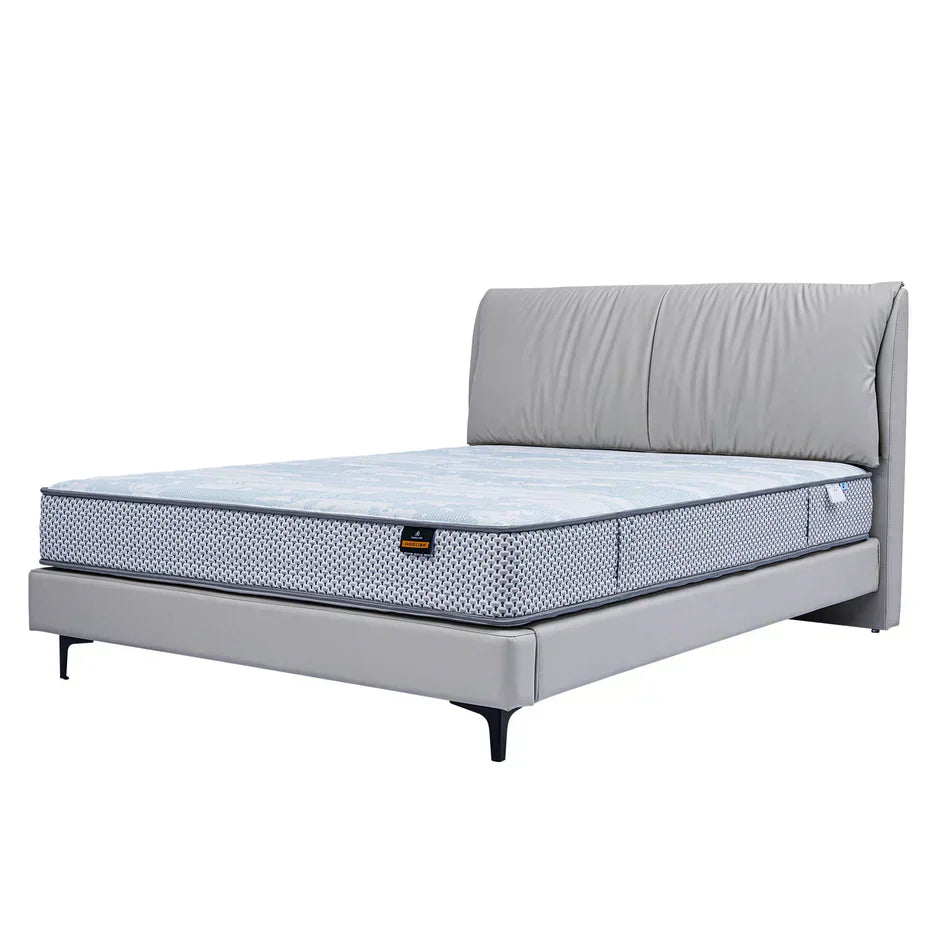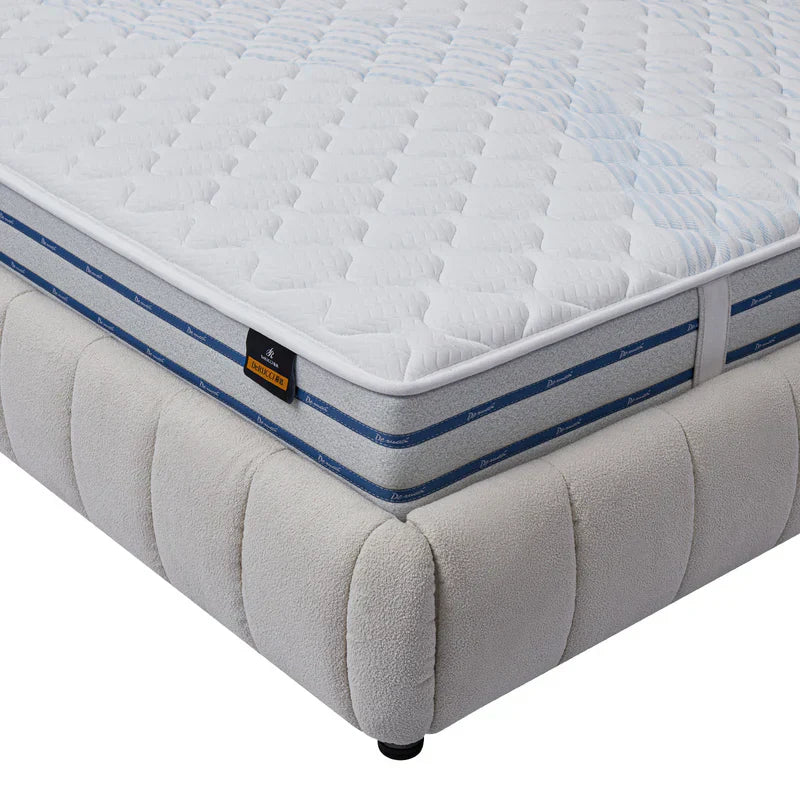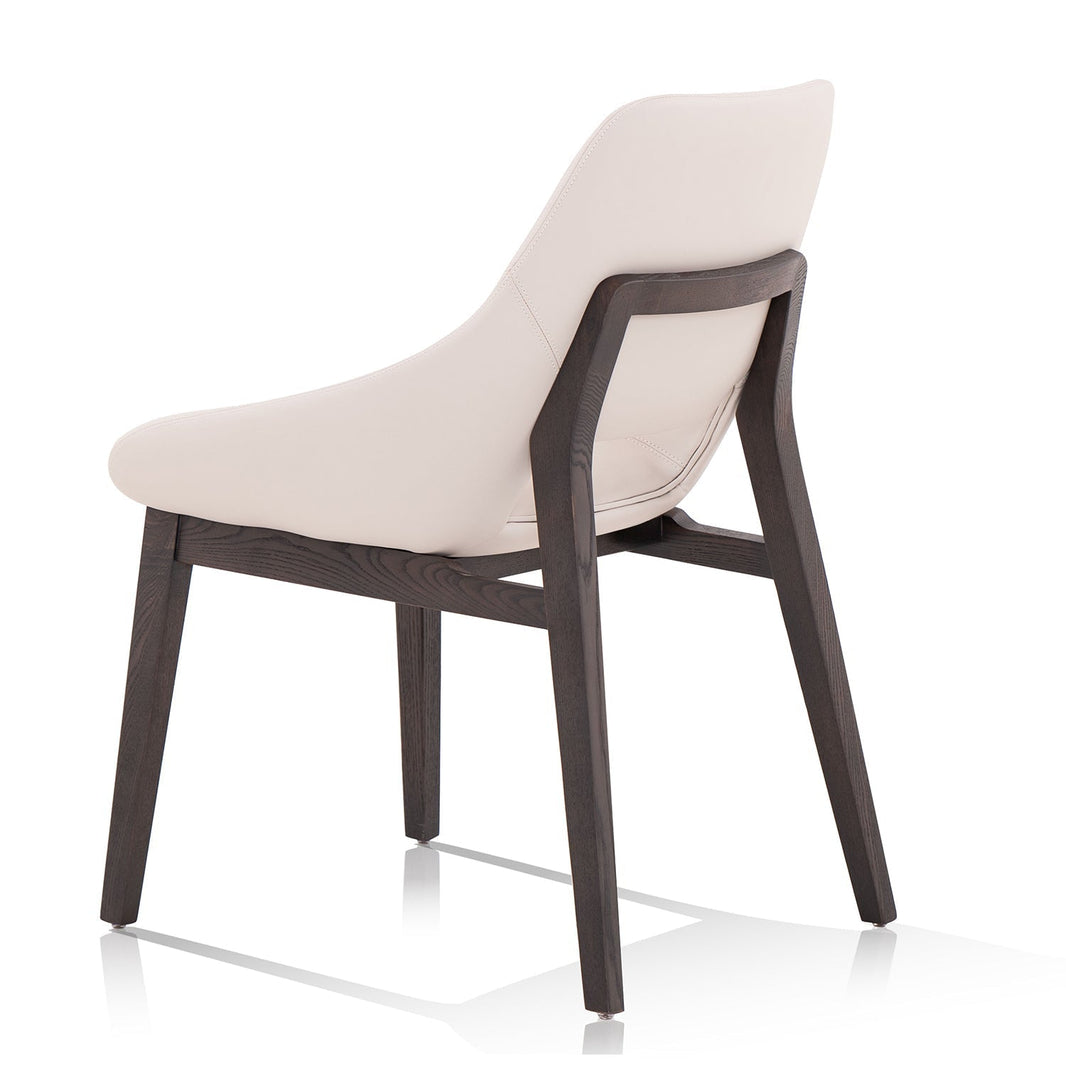Choosing the right mattress during pregnancy is crucial for your comfort and health. This guide will show what is important in a mattress to sleep on, like firmness, support, and stability. We'll help you pick the right size and height, and discuss possibly benefiting from an adjustable bed. In addition, we will explain why a non-allergic, safe mattress is good for both you and your baby.

What Are Different Types of Mattresses for Pregnancy?
Memory Foam: Cradling Your Curves
Memory foam mattresses are extremely popular for pregnant expectant mothers. Such mattresses take the form of your body and provide optimal support where it's needed most, giving comfort. They evenly distribute the weight for lesser pressure points that alleviate pregnancy pains.
Innerspring: Traditional Bounce
Innerspring mattresses feature coils that allow for a more traditional bouncy feel. They usually have good airflow, which can help to keep you cooler as you sleep. When pregnant, look for an innerspring with generous cushioning on top that will both comfort and support you.
Hybrid: The Best of Both Worlds
Hybrid mattresses combine memory foam or latex layers on the top of innerspring coils for support and comfort. The layers of foam help with motion isolation, while the springs provide a solid base that is especially helpful during times of body change.
Latex: Natural and Responsive
Latex is a naturally responsive and supportive material. It's also generally known to be resilient and breathable. Natural latex could also be a pretty good option if you are looking for an eco-friendly option during pregnancy.
What Are the Must-Have Features in a Mattress for Pregnancy?

1. Find the Right Firmness for Belly Support
The firmness of a mattress is not just about comfort, but also about support. Your body is going to need extra support during this phase of pregnancy, accommodating the growing belly. In that case, a medium-firm mattress hits just the right spot: not too hard to make it feel like sleeping on a board, yet not so soft that you sink in way too deeply.
2. Get a Mattress That Keeps Your Spine Aligned
Look for a mattress that will keep your spine aligned. The center of gravity shifts when one is pregnant, straining the back. Allowing good support can prevent this from occurring as it keeps the spine in a natural position while sleeping.
3. Choose a Mattress That Won't Shake With Every Toss and Turn
If you share the bed, then motion isolation allows you to move about or rise without bothering your partner. This is very useful when those middle-of-the-night bathroom trips start getting more frequent.
4. Look for Mattresses with Solid Edges to Sit and Sleep Safely
The thing about edge support is that it is one of those things you never think about until you need it. You can sit comfortably on a firmer edge without sliding off, and that is so helpful when you're trying to tie your shoes or ease out of bed.
Each of these features adds to the slumber an expectant mother needs. Take the time to look for these qualities whenever you go mattress shopping-your body and your baby will thank you for it.
Is a Firm or Soft Bed Better for Pregnancy?
During pregnancy, a medium-firm mattress is better because it offers the support one needs but with some softness to conform to the body changes.
While you need a supportive surface that can handle the added weight and changes in your body, comfort is just as important. Many recommend considering softer mattresses—one that contours to the body and at the same time supports it. The softness cradles the new curves of the body and the growing belly, relieving common pressure points such as hips and shoulders so your nights can be more restful.
However, 'soft' does not mean unsupportive. A medium-firm-rated mattress may hit the spot just right; it can be soft enough to provide the contouring comfort you need while still offering support for your back and spine. Because every woman's body is different at different times during the various stages of pregnancy, having a mattress that balances softness with support, or supplementing with adjustable features or a quality mattress topper, adapts to needs as they change.
How to Pick the Right Size and Shape for Your Pregnancy Mattress
Comfort isn't the only thing you'll want to take into consideration when picking out a pregnancy mattress; it is equally important to ensure that it will fit in your space and accommodate your needs.
Choose a Larger Mattress for More Space During Pregnancy
It has often been found that sleeping comfortably during pregnancy requires so much more room than can be had with an average-sized twin or full-size bed, which are 38 by 75 inches and 53 by 75 inches, respectively. Moving on to bigger mattresses, such as ones that are 60 by 80 inches or even up to 72 by 80 inches, makes room for your body to grow and those growing-body-needed pillows. This is quite essential for free movements to be made, comfortable positioning of the body to be well affected, and proper sleep hygiene to be accorded during this journey of pregnancy.
Choose a Comfortable and Accessible Mattress Height
As the weeks go by and your center of gravity changes, your joints have to bear more weight, so it will be important to have the right mattress thickness and height. A thicker mattress can cradle your body, support those new pressure points that come with pregnancy, and give relief to comfort. But consider mattress height, too: too tall, it's a climb; too low, rising becomes a chore. Look for something of a reasonable height, which will allow you to slide out of bed in comfort, even when your belly has turned mere simple movements into an exercise in gymnastics.

Get an Adjustable Bed for Flexible Sleeping Positions
An adjustable bed isn't just a luxury; it's a practical aid that can really help improve sleep. The ability to raise your head will lessen late pregnancy heartburn and help with breathing. You can reduce swelling in the legs by raising the foot. After birth, the adjustability can become a lifesaver during late-night feeds or trying to get out of bed without disturbing the little one sleeping beside you.
How to Ensure Safety and Allergy Protection with Your Mattress
When it comes to picking a mattress during pregnancy, safety isn't just a preference; it's a priority. And for those with sensitivities, hypoallergenic options can make a huge difference.
Select Certified Mattresses for Safe Sleep
Safety in mattresses often relates to the materials used and their chemical composition. During pregnancy, you'll want to avoid harmful chemicals that might off-gas, which can be found in some foam mattresses. Look for certifications like CertiPUR-US or GREENGUARD Gold, which indicate lower levels of toxins and chemical exposure, ensuring a safer sleeping environment for you and your baby.
Choose Allergy-Free Mattresses for Comfort
If you're prone to allergies, choosing a hypoallergenic mattress could help keep sneezing and itching at bay. These mattresses are designed to prevent allergens such as dust mites, pet dander, and mold from penetrating into the bed — creating a cleaner, healthier sleep surface. They're usually made of dense materials that leave no space for allergens to settle.

How Can I Increase Bed Comfort During Pregnancy?
Comfort is crucial when you're expecting, so here's how to make your bed the perfect sleep haven during pregnancy:
- Soften Your Surface: If your mattress feels too hard, consider a memory foam topper for an extra layer of softness that still supports your changing body.
- Support with Pillows: Use pregnancy pillows designed to support your belly, back, and legs. U-shaped or C-shaped pillows are great for this.
- Side Sleeping is Best: Lie on your side, left if possible, to keep good blood flow. A pillow between your knees can keep your spine aligned and reduce lower back pain.
- Stay Cool: Choose light, breathable sheets like cotton to help control your body temperature. A cooler room will also help you stay comfortable throughout the night.
- Easy Access: Go for a bed that’s low enough to get into and out of without hassle, which can become more challenging as your pregnancy progresses.
- Extra Help: Think about adding some cushioned support by your bedside to help prop yourself up or down as needed.
The Bottom line
Finding the right mattress while you're pregnant comes down to a few important points. You want one that feels good and supports your body as it changes, is safe for you and your baby, and doesn't trigger allergies.
Make sure to get one that's big enough for you to stretch out in and isn't too high or low so you can get in and out of bed easily. And if you can, go for an adjustable bed—it can help a lot with comfort. Take it easy, look for those safety labels, and pick a mattress that will help you get the sleep you need during this important time.
FAQs
Q1: Is a memory foam mattress safe during pregnancy?
Yes, a memory foam mattress is safe in pregnancy. It will adapt to your body form by providing support wherever you need it and as it keeps on changing. However, ensure the quality of the memory foam is good and certified for no harmful chemicals, or else one may face certain risks.
Q2: Can I lift a mattress while pregnant?
No. It's generally advised that pregnant women should not lift heavy objects, including a bulky item like a mattress. Heavy lifting can stress your back and pelvis, increase the risks of injury, and even lead occasionally to complications in the pregnancy.
Q3: What are the best sleeping positions while pregnant?
In pregnancy, certain sleeping positions are generally preferred, such as sleeping on your side and more importantly on the left side to improve circulation of blood flow to the baby. Pillows can be used to comfort this position: between the knees, under the abdomen, and behind the back.
Q4: What if I accidentally slept on my back while pregnant?
If you wake up and find yourself on your back, don't freak out. It's normal to move into different positions during sleep, and sleeping on one's back occasionally is unlikely to harm the baby. Just roll onto your side when you realize it, and consider using pregnancy pillows to prevent you from rolling onto your back again. If you have any concerns or a specific health condition about your pregnancy, always consult your health provider.








